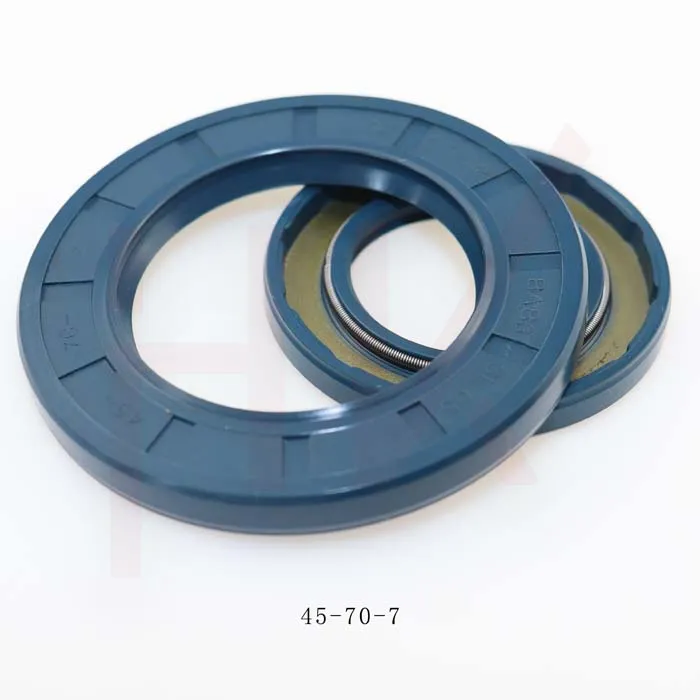Dic . 19, 2024 10:00 Back to list
Improving Piston Seal Performance with Advanced Wiper Technologies for Enhanced Durability and Efficiency
Understanding Piston Wiper Seals Functionality, Design, and Applications
Piston wiper seals play a crucial role in various hydraulic and pneumatic systems. They are specifically designed to prevent contaminants from penetrating the working area of a piston, contributing to enhanced efficiency and longevity of machinery. This article delves into the functionality, design, and applications of piston wiper seals.
Functionality of Piston Wiper Seals
Piston wiper seals are positioned on the outer edge of a piston rod. Their primary function is to prevent dirt, dust, and other debris from entering the hydraulic or pneumatic system when the piston is in motion. By warding off these contaminants, wiper seals minimize wear and tear on the piston and cylinder walls, ensuring smoother operation and reduced maintenance costs.
When a piston moves within a cylinder, particularly in outdoor or harsh environments, there is a risk of contaminants being drawn into the chamber due to the piston’s motion and pressure differentials. The wiper seal effectively scrapes off any dirt that may cling to the piston rod as it retracts. This action is vital, as any unwanted particles can lead to premature failure of the hydraulic system, resulting in downtime and costly repairs.
Design of Piston Wiper Seals
The design of piston wiper seals is a blend of engineering and materials science. They are typically made from high-performance elastomers or thermoplastic materials that offer excellent resistance to wear, temperature fluctuations, and chemical exposure. Common materials used include polyurethane, nitrile rubber, and silicone, each selected based on the specific operating conditions and fluid compatibility.
piston wiper seal

Wiper seals come in various shapes and profiles, tailored to suit different applications. The design includes features such as lip geometry, which can be tapered or straight, to optimize scraping action. Some wiper seals incorporate additional design elements, such as pressure-relief grooves or dust lips, to enhance their functionality. These features help to ensure that contaminants are effectively removed and that the seal maintains contact with the wiping surface, providing maximum protection.
Applications of Piston Wiper Seals
Piston wiper seals are used in a wide range of industries, including construction, manufacturing, automotive, and aerospace. In hydraulic cylinders for excavators and loaders, for instance, efficient sealing is essential to prevent deterioration of performance due to external contaminants. Similarly, in automotive applications, these seals are critical in maintaining the integrity of shock absorbers and braking systems.
In the aerospace industry, where equipment is often exposed to extreme conditions, piston wiper seals are designed to withstand not just dirt, but also high pressures and temperatures. Their robust design and functional reliability are key to ensuring the safety and efficiency of aircraft systems.
Moreover, advancements in technology have led to the development of smart seals equipped with sensors that can monitor wear and alert operators before a seal failure occurs. This proactive approach to maintenance can further extend the lifespan of machinery.
Conclusion
In summary, piston wiper seals serve a vital function in protecting hydraulic and pneumatic systems from contaminants, thereby ensuring optimal performance and longevity. Their carefully engineered designs, made from durable materials, cater to a myriad of applications across various industries. As technology continues to advance, the importance of these seals in promoting operational efficiency and reliability will only grow, underscoring their indispensable role in modern machinery. Understanding the significance of piston wiper seals is crucial for engineers and operators alike, emphasizing the need for regular maintenance and timely replacements to ensure seamless operations across industries.
-
TCN Oil Seal Metal Ring Reinforcement for Heavy Machinery
NewsJul.25,2025
-
Rotary Lip Seal Spring-Loaded Design for High-Speed Applications
NewsJul.25,2025
-
Hydraulic Cylinder Seals Polyurethane Material for High-Impact Jobs
NewsJul.25,2025
-
High Pressure Oil Seal Polyurethane Coating Wear Resistance
NewsJul.25,2025
-
Dust Proof Seal Double Lip Design for Construction Equipment
NewsJul.25,2025
-
Hub Seal Polyurethane Wear Resistance in Agricultural Vehicles
NewsJul.25,2025
-
The Trans-formative Journey of Wheel Hub Oil Seals
NewsJun.06,2025
Products categories
















